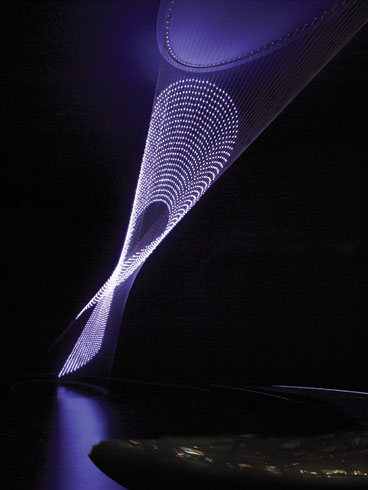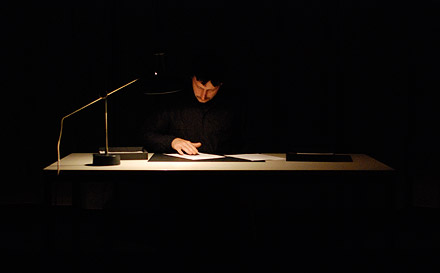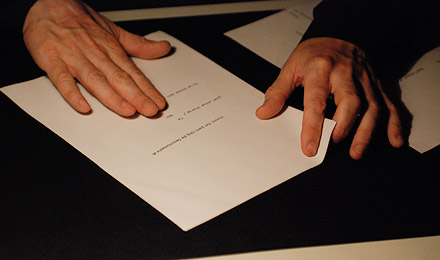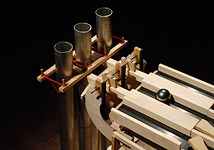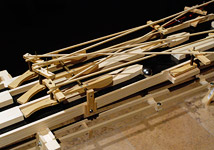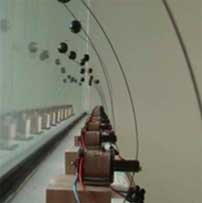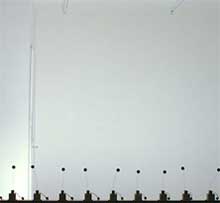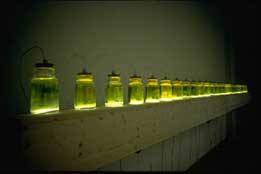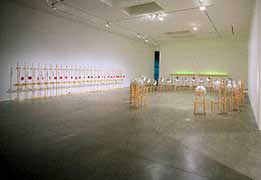Evolutionary musical organism:
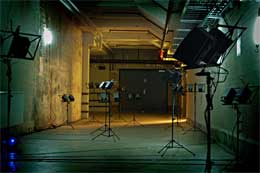 Bacterial Orchestra
Bacterial Orchestra is a self-organizing evolutionary musical organism made of audio cells. Every cell -consisting of microphone and a loudspeaker- listens to its surroundings and picks up sounds trying to play them back in sync with what it hears. It can be the background noise, people talking or sound played by other cells. Every cell is simple, but together they create a complex whole.
Every cell is born with a unique set of characteristics (its DNA) that control the way it will react to sound. If it’s not fit enough, the cell dies and is reborn with a new DNA (you can also
adopt a cell, btw.)
The result is a musical organism adapting to its environment, evolving with neighbouring cells and spectators and becoming musically smarter and smarter.
The piece was developed by
Olle Cornéer,
Christian Hörgren and Martin Lübcke. I asked Olle a couple of questions about the
Bacterial Orchestra:
What motivated you to make this installation?We are really interested in systems that are self-organizing and has it's own life. You never know what would will be created in the end. The only thing you could do is to give birth to the creation. Then wait. I have been interested in sound installations for a while now, but I often think that they're more "sound" than "music". This is musical organism. It might sound a bit random, but it creates music. All sounds from the Bacterial Orchestra are played in interaction with the other cells and with sounds in the room. It's music.
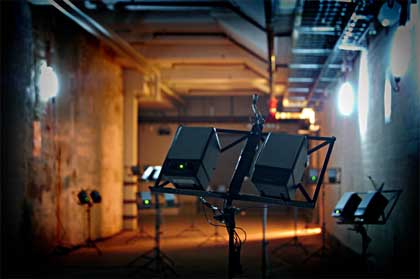 Any plan to show the installation at other venues or to keep on improving it?
Any plan to show the installation at other venues or to keep on improving it?Yes, we have just showed it one time. First we are interested in showing it in another environment - since it will react competely different. We're also interested in making it larger. Today it's built around 16 cells, but the idea is to add a few cells every time we show it. It can easily be scaled - since the cells only are communicating through (analog) audio. We hope to one day be able to show it when it's built of hundreds of cells. That's what I call a pendemic!
The work sounds kind of "human", did you develop some sort of affection for it?Yes, actually we did. It really didn't react the way we wanted it to, which was really interesting. For example it started to scream - from self oscillation in the room. This is not supposed to be possible, since the cells don't listen and play sounds at the same time. Feedback is impossible. And still sometimes there would be strange noises, similar to a musical feedback. At that times all the other cells picked up the uncontrolled sound and the whole installation was screaming. At points when we were in other parts of the building, me and Martin would react to the screaming sounds down in the basement, where the installation was showed. I think you could compare it to a father or mother reacting to a crying baby in the room next door. You think you hear it, but it's not there all the time... It comes from your concern.
From: we make money not art
